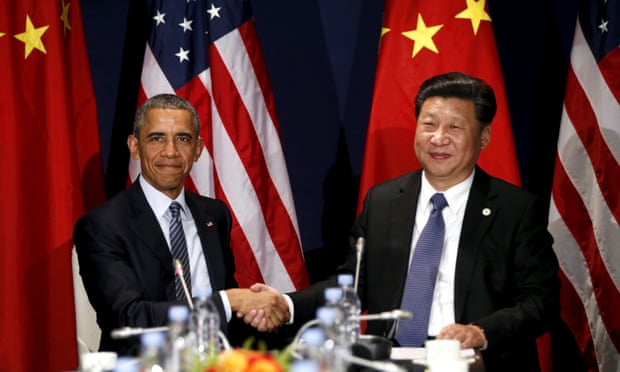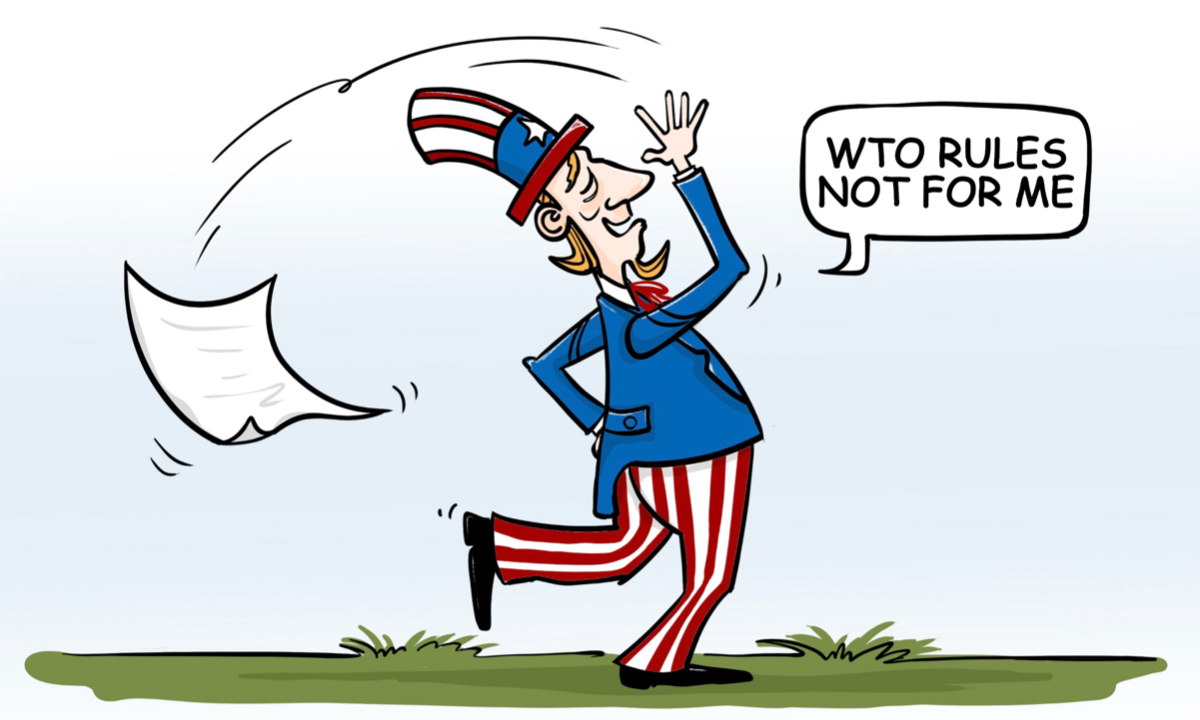The Blood and Tears of US Labor Past Cannot Escape the Whiplash of History
Racism and Social Darwinism Abound
As the quintessential nation of immigrants, the U.S.’ development was built with the hard work of laborers from all over the world. But the financial and industrial oligarchs who controlled the machinery of the state combined capitalism with the racism of U.S. state ideology to take advantage of racial, cultural and geographical differences between New World laborers, forcibly partitioning them into various classes. This move would not just divide the working classes and groups in the U.S., preventing them from establishing and strengthening any solidarity organizations or forming checks and balances against monopoly capital; echoing the international labor movement, it would also facilitate the continued absorption of new immigrants by U.S. businesses, supplementing and expanding their intellectual and cheap-labor resources while suppressing the wages and benefits of local workers through “free competition.” For a long time, this social Darwinism-permeated labor regime ensured the supply of labor and the vitality of the U.S. economy, keeping the capitalists’ money rolling in.
Economic globalization and the superpower status the U.S. enjoys have contributed to attracting a flow of talent from all over the world, while the U.S. labor regime has promoted the high concentration of societal wealth and the deep oligarchization of the economy. With the transformation of U.S. society’s income structure from “spindle” to “pyramid,” coupled with the impact of the pandemic and the war, the already serious class, ethnic and regional conflicts in the U.S. have begun to intensify. The working classes, situated in the lower and middle strata of income distribution, have borne the brunt of the blow and are finding it difficult to maintain a normal life. From the outbreak of the subprime mortgage crisis to the present day, large-scale violent protests such as Occupy Wall Street and Black Lives Matter have evolved into partisan and even socio-cultural wars that have torn deeply into U.S. society, and the many fundamental problems inherent in the U.S. labor market are the root cause of all of this. Not only has a labor mechanism such as this placed the U.S. working class at a disadvantage relative to the bourgeoisie as a whole, but the accumulation of contradictions has also led the people to doubt the U.S. system. Among those contradictions, deep-rooted racism and ultra-liberal capitalism have culminated in the creation of capital-driven relations of production, in which the law of the jungle reigns supreme. Within the general context of the unlimited expansion of financial capital and the transfer overseas of U.S. industrial capital, these are long overdue and intractable structural issues, making the labor problem in the U.S. difficult to resolve.
Maltreatment of Chinese Workers Is the Most Representative and Egregious
The damage done to U.S. workers by racism is more systematic and longstanding than is generally acknowledged. While people generally think of the systematic discrimination against Black workers in education and employment in the U.S., the most representative and egregious cases of labor maltreatment in U.S. history have actually been against Chinese workers.
After the Opium War, U.S. companies trafficked Chinese unskilled laborers to the Americas in a variety of ways. According to scholarly statistics, from 1847 to 1873, the death rate at sea of Chinese workers shipped to the U.S. was a staggering 64.2%. Those Chinese workers who managed to reach the U.S. did not just have to work in California in arduous or high-mortality jobs such as farming, gold panning, dishwashing, laundry, rickshawing, domestic servitude and building the Pacific Railroad; in that systemically racist environment, they also risked being attacked and even killed by white mobs at any moment. Out of fear of industrious Chinese laborers, U.S. racists often politicized and scapegoated them about economic issues, blatantly using cultural and religious prejudices as a pretext for setting off a wave of anti-Chinese sentiment.
In 1882, the U.S. Congress arbitrarily and unilaterally tore up the immigration provisions in the Burlingame Treaty and passed the first discriminatory bill against a particular race and nationality based on immigrant labor issues: The Chinese Exclusion Act. After it had been renewed every 10 years, in 1902 Congress made this draconian law permanent, not repealing it until Dec. 17, 1943, after the outbreak of the Pacific War, yet still imposing severe restrictions on the number of Chinese immigrants. During the implementation of the Chinese Exclusion Act, many massacres and persecutions of Chinese workers occurred in the U.S., such as the Rock Springs Massacre of September 1885 by members of the Knights of Labor workers’ union, the Tacoma Riot in November of the same year, the Chinese Exclusion Riot of February 1886 that was instigated by white labor organizations in Seattle by means of an “anti-China congress,” and the Hells Canyon Massacre of 1887, in Oregon. Drawing dubious inspiration from the Chinese Exclusion Act, these heinous incidents, initiated by members of white U.S. labor organizations and gangsters to deprive Chinese workers of their lives, property and job opportunities, were crimes that will live on in the history of U.S. labor. Today, however, when anti-Chinese politicians in the U.S. recklessly slander and incite hatred of China, they seem to completely forget each and every blood debt owed the U.S.’ Chinese workers by their forebears.
Long-term Suppression and Persecution of US Labor Movement
The history of the labor movement in the U.S. must be examined in the context of the long-running suppression and persecution of U.S. workers by the forces of monopolistic capital. U.S. workers hold the distinction of having launched a powerful and dynamic labor movement in a great power that led the industrial revolution of the 20th century. After the outbreak of the Great Depression in particular, Roosevelt’s New Deal and the National Labor Relations Act passed in 1935 gave U.S. trade unions greater room for development. However, after the start of the Cold War, the conservative forces controlled by U.S. capitalists used the Smith Act to enact legislation that would purge and persecute, on anti-Soviet and anti-communist grounds, those in U.S. labor unions with communist and socialist leanings, prosecuting and convicting hundreds of leaders of the labor movement and the Communist Party in the U.S. between 1949 and 1958. Under the influence of McCarthyism, the U.S. Congress passed the McCarran Internal Security Act of 1950, the Immigration and Nationality Act of 1952, and the Communist Control Act of 1954. The enactment of these bills and the attendant lawsuits, arrests, convictions and persecutions dealt a fatal blow to the U.S. Communist Party, dramatically suppressed and restricted the leftist workers’ movement, and brought about divisions and compromises in the U.S. labor union movement. The Taft–Hartley Act, which came into effect in 1947, restricted the labor movement even more severely: The AFL-CIO, formed in 1955 through the merger of the American Federation of Labor and the Congress of Industrial Organizations and which once numbered over 15 million members, would remain under the shadow of the act for a long time to come, and its leaders would be required to swear in writing not to support the Communist Party. Subsequently, the AFL-CIO became increasingly trust-based and factionalized, unable to effectively defend the labor interests of the public and private sectors that utterly dominated U.S. industry, and instead evolved into a Cold War-era anti-Communist tool.
After 1970, the rise of the multinational corporation and American industry’s shift to emerging economies led to a sharp drop in private sector labor union memberships, and the strength of U.S. labor organizations declined along with them. In 1981, the Reagan administration, known for implementing liberal economic policies, cracked down on the Professional Air Traffic Controllers Organization, further disempowering U.S. labor unions. By picking up the speed of work, consolidating work specialties, forcing overtime and resorting to temporary employees, large U.S. companies increased the exploitation of laborers. After 1991, the large influx of scientific and technological talent from the former Soviet East and developing countries not only created enormous wealth for the U.S. financial and technological oligarchy, but it also brought about significant changes in the structure and distribution of U.S. industries. In search of maximum profits, U.S. industrialists continued to shift manufacturing to developing countries, with the U.S. working class also being able to share in the fruits of developing countries’ high-quality and low-cost labor.
Watching Out for a Resurgence of Past US Misdeeds
However, the U.S. government and capitalists, both of whom advocate economic liberalism, are unwilling to increase investment in the education and job skills of the U.S. working class. Instead, the pursuit of self-interest remains the top priority, resulting in large numbers of workers in traditional U.S. manufacturing industries — automobiles, machinery, chemicals — gradually falling behind the wave of globalization, becoming the “grapes of wrath” of the Rust Belt region.
In recent years, under the influence of multiple crises such as the pandemic and dramatic changes in the international situation, the socioeconomic disease in the U.S. has finally flared up. However, instead of reflecting on themselves, identifying the root causes of the issues, and prescribing the right remedies, some in U.S. politics and the media have tried to distract from their domestic conflicts by once again stirring up anti-Chinese public sentiment, blaming progress and development in China for socioeconomic problems in the U.S. In tandem with the U.S. government, and masquerading as nongovernmental or nonprofit organizations, certain trust-based U.S. labor organizations have also intervened in international politics to internationalize U.S. labor issues; in a futile attempt to deprive China of its right to development and misappropriate the fruits of its modernization, they have used concoctions such as “ethnocide” and “forced labor” to level accusations at China and encourage sanctions against it. In a sense, this move is a resurgence of U.S. conservative forces’ misdeeds in rejecting Chinese workers in the 19th century, and in cracking down on leftist laborers in the 20th.
However, times have changed, and the violence and lies that the U.S. inflicts on others will not resolve its problems, let alone cover up its labor history, which is written in blood and tears. Only if the U.S. government and capitalist consortia take a serious look at socioeconomic ills at home, treat other countries and peoples equally, and adopt constructive rather than destructive policies both internationally and domestically, will they stand a chance of identifying solutions to domestic and international problems that will be truly beneficial to world peace and human development.
By Xu Jianying, research fellow at the Institute of Chinese Borderland Studies, Chinese Academy of Social Sciences (CASS); and Yun Wenjie, special appointee research fellow at the China Center for Special Economic Zone Research, Shenzhen University


